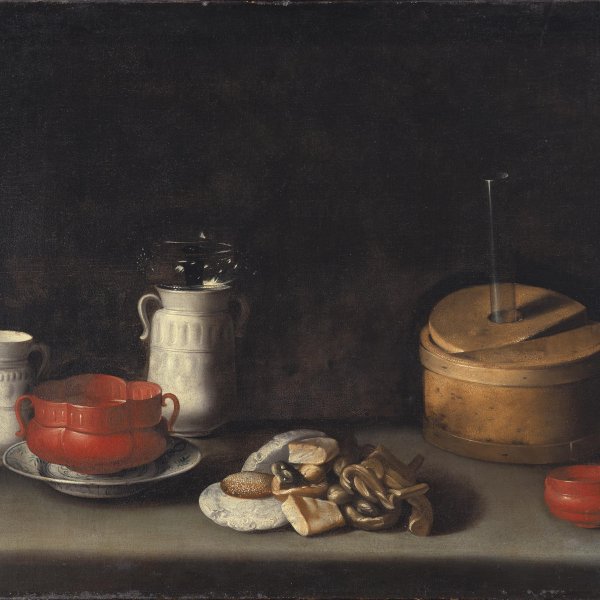Juan van der Hamen y León
Madrid, 1596-1631
Born in Madrid in 1596, Juan van der Hamen came from a wealthy, aristocratic family descended from an ancient line of Flemish nobles and military figures who had served the Habsburg court for generations. Like his father and grandfather Juan van der Hamen was a member of the Archer’s Guard, an elite corps entrusted since the reign of Charles V with the honorary mission of protecting the monarch. Nothing is known of Van der Hamen’s training except that it took place in Madrid. In 1615 he married Eugenia Herrera, member of a family of painters and sculptors and four years later received his first commission from the court in Madrid.
As a painter Juan van der Hamen was celebrated at court and by the aristocracy and played an active role in the cultural life of Madrid, writing verses, for example, on the relationship between poetry and painting. Some of the great literary figures of the day, including Lope de Vega, Góngora and Juan Pérez de Montalbán, referred to him in their writings, praising his ability to recreate reality. Juan van der Hamen produced religious compositions, portraits and still lifes, and was most highly appreciated for the latter.
Van der Hamen’s first still lifes are influenced by Flemish art and reveal elements of his mature style such as the precise technique, spacious, airy compositions and the use of a single focus of light that creates strongly contrasting shadows. The elements are presented symmetrically with an interest in the different textures of the objects depicted. From 1626 he introduced asymmetrical compositions into his still lifes, creating groups of elements balanced by ledges and shelves on different levels and planes, resulting in more rich and complex spatial constructions. Van der Hamen’s most typical style reveals his admiration for the work of Sánchez Cotán, a still-life painter of the previous generation. Van der Hamen can be considered the finest painter of floral still lifes in Madrid in the 1620s. He was also responsible for promoting in Spain the sub-genre of garlands of flowers framing religious scenes or motifs.
As a painter Juan van der Hamen was celebrated at court and by the aristocracy and played an active role in the cultural life of Madrid, writing verses, for example, on the relationship between poetry and painting. Some of the great literary figures of the day, including Lope de Vega, Góngora and Juan Pérez de Montalbán, referred to him in their writings, praising his ability to recreate reality. Juan van der Hamen produced religious compositions, portraits and still lifes, and was most highly appreciated for the latter.
Van der Hamen’s first still lifes are influenced by Flemish art and reveal elements of his mature style such as the precise technique, spacious, airy compositions and the use of a single focus of light that creates strongly contrasting shadows. The elements are presented symmetrically with an interest in the different textures of the objects depicted. From 1626 he introduced asymmetrical compositions into his still lifes, creating groups of elements balanced by ledges and shelves on different levels and planes, resulting in more rich and complex spatial constructions. Van der Hamen’s most typical style reveals his admiration for the work of Sánchez Cotán, a still-life painter of the previous generation. Van der Hamen can be considered the finest painter of floral still lifes in Madrid in the 1620s. He was also responsible for promoting in Spain the sub-genre of garlands of flowers framing religious scenes or motifs.





